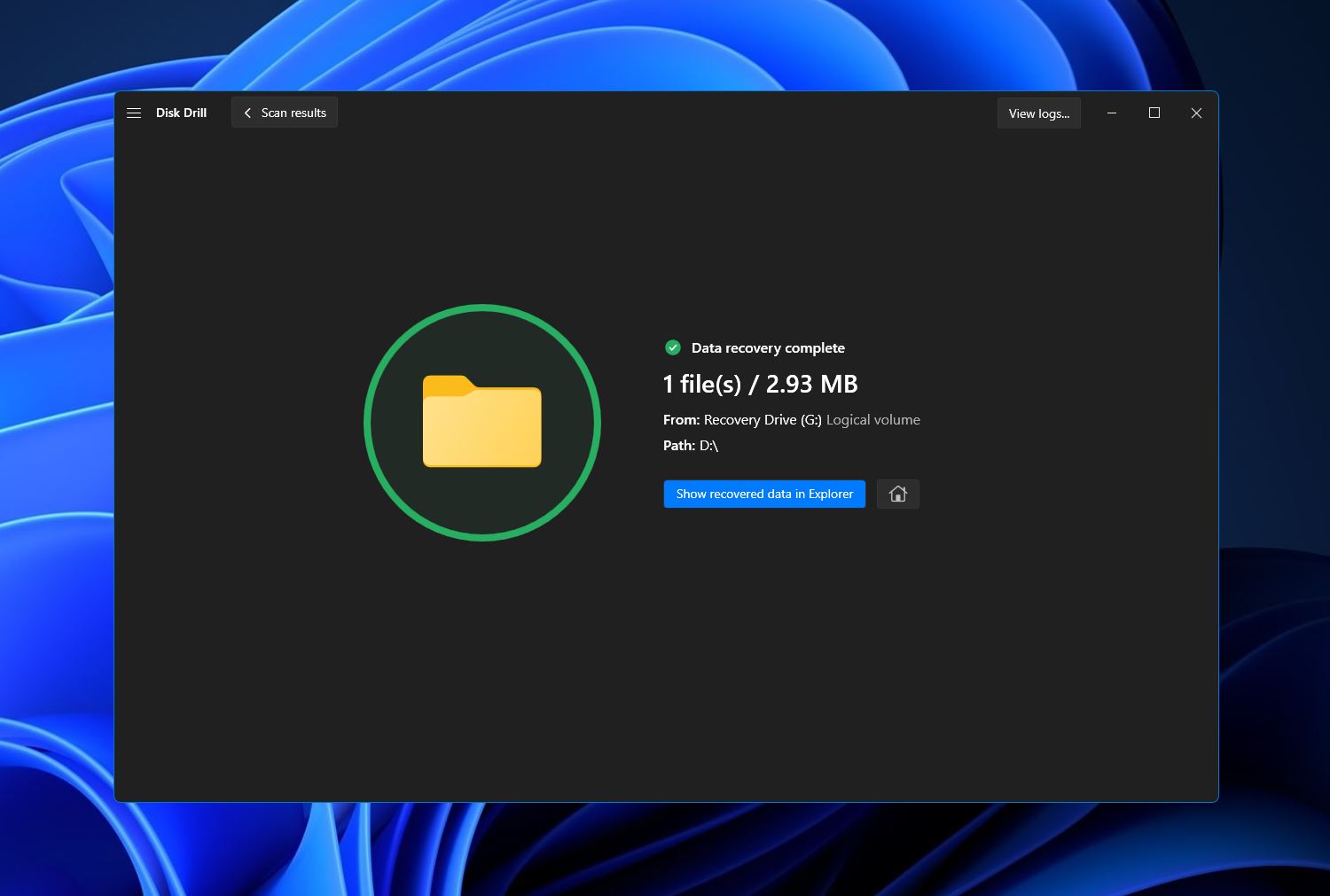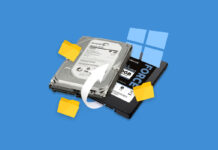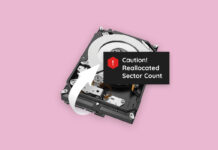 EXT4 is one of the more popular file systems around, particularly when it comes to Linux users. And just like any other file system, EXT4 is prone to various kinds of data loss, putting your files in jeopardy of going missing at a moment’s notice.
EXT4 is one of the more popular file systems around, particularly when it comes to Linux users. And just like any other file system, EXT4 is prone to various kinds of data loss, putting your files in jeopardy of going missing at a moment’s notice.
In case you’ve encountered such an unfortunate scenario, we’ve come up with a guide for the best methods to perform data recovery on EXT4.
All You Need to Know About EXT4 File Systems
As previously mentioned, EXT4 is a Linux-based file system that isn’t natively supported by either Windows or Mac. It’s used with internal drives, as well as external storage devices like USBs and external hard drives.
EXT4 offers a few solid advantages over its more commonplace NTFS counterpart, including improved performance, fewer fragmentation problems, and better reliability.
On the other hand, it’s a lot less compatible with different operating systems, lacks built-in encryption, and is limited to a maximum file size of 16 TB compared to the 256 TB sported by NTFS.
Here are some of the most common situations that may lead to data loss in an EXT4 partition:
| Reason | Description |
| 🗑️ Accidental Deletion | No matter what kind of file system you’re using, one of the most common forms of data loss is when you delete files by mistake. You can recover deleted files in Linux file systems using a data recovery program, provided the files have yet to be overwritten. |
| 🔌 Abrupt Power Fluctuations or Device Removal | Power failure or suddenly removing a device can often lead to data loss, especially when the file was being accessed at the time of the incident. You can potentially recover Linux files from Windows that were lost due to power loss or abrupt device removal by using data recovery programs. |
| 💿 Corruption | EXT4 is just as susceptible to file corruption as other file systems, be it from device damage, bad sectors, or malware incidents. Corrupted files can often be retrieved by data recovery programs, but they can’t be fixed by them. The most reliable way to restore corrupted files is through a backup. |
| 🦠 Malware | Linux file systems like EXT4 are prone to a host of different kinds of malware, such as Ransomware, Rootkits, Botnets, and Cryptojacking. Some of these kinds of malware can cause data loss on your storage device, like file deletion, data corruption, and total drive wipes. |
| 📃 Premature Formatting | Another recurrent data loss scenario among users using an EXT4 file system is formatting without backing up crucial data. You can perform formatted partition recovery using data retrieval programs as long as a “Quick” format was performed and the data hasn’t been overwritten yet. |
How to Recover Data From an EXT4 Partition
While Mac and Windows operating systems are not compatible with EXT4 from the get-go, there are a few third-party tools that can make them accessible. That being said, it’s still not advisable to format the EXT4 partition if you’re using either of those two operating systems.
As for recovering data from EXT4 partitions, this can be done using the methods described below.
Method 1:Use a Professional Data Recovery Tool
Perhaps the best method to recover EXT4 partitions for Linux using a Windows OS is through a data recovery app. The thing is, not all programs of this nature are capable of accessing EXT4 file systems, so you’ll need to find one that’s both effective and EXT4-compatible.
Disk Drill is an excellent option that not only works with EXT4 partitions but also boasts superb recovery rates, lightning-quick scans, and a seamless UI.
It also offers a free trial version that comes with all the bells and whistles and a 500 MB data recovery limit. This allows you to thoroughly test out the program and retrieve some lost files.
Here’s an easy step-by-step guide on how to use Disk Drill to recover data from EXT partitions:
- Download the newest version of Disk Drill, and install it on your computer. Keep in mind that the program supports Windows 10 and 11, but previous iterations of Windows may require an older version of the app.
- Make sure the storage device that contains your EXT4 partition is connected to your PC. From there, run Disk Drill, select the drive that the partition is part of, and click the Search for lost data button on the right. Although it is possible to choose a specific partition, it’s best to scan the whole drive for better recovery results.

- Next, Disk Drill will start scanning your EXT4 for any recoverable files. You can click the Review found items button on the top-right corner of the window to head to the next section.

- Once you get to the results screen, you’ll see all the files unearthed by the program. This can be pretty overwhelming, so you can narrow down the list by using the categories on the left and the search feature on the top right. It’s worth mentioning that the search bar accepts both file names and file extensions. Select the files you want to retrieve by ticking the checkboxes next to their names, then click Recover to continue.

- Upon clicking, a pop-up will appear where you’ll have to select a destination or your retrieved files. Once done, click Next.

- After that, Disk Drill will now try to get the lost files back from your EXT4 partition. If it succeeds, you’ll see a completion screen and a button labeled Show recovered data in Explorer that you can click to go straight to your rescued files.

Method 2:Use a Free Data Recovery Utility
Free Windows data recovery options are quite limited when it comes to file systems geared toward other operating systems, but there are a few out there that can get the job done.
PhotoRec – the version of TestDisk that features a graphical interface – is a good option that’s both open-source and completely free, though its interface leaves much to be desired, and you shouldn’t expect much support in case you run into issues. It’s also not as effective as some of the paid alternatives.
To rescue lost data using PhotoRec, simply follow the steps below:
- First, run PhotoRec and select the storage device where your EXT4 partition is located using the dropdown near the top of the window.

- Choose your EXT4 partition from the list and decide on the recovery location using the “Browse” button in the lower-right corner. When you’re ready, hit the “Search” button.

- PhotoRec will scan for recoverable files and save them in the specified location.

Method 3:Apply to Data Recovery Service
If the aforementioned methods don’t do the trick or your storage device has sustained physical damage, then it’s likely out of the scope of anything you can do from a DIY perspective. In that case, you’ll need to reach out to a competent data recovery service to see if they can retrieve your files for you.
Here are a few things to keep in mind when searching for an effective data recovery service:
- Make sure to read through a decent amount of referrals and reviews from previous customers.
- Ensure the service is properly certified.
- Don’t hesitate to reach out to them first and ask them appropriate questions.
- Take a good look at their policies.
Conclusion
EXT4 is a common file system as far as Linux operating systems are concerned, but they’re not natively compatible with Windows or MacOS and require a third-party tool to be accessed. This makes it a bit trickier if you’re trying to recover lost data from an EXT4 partition using a Windows machine.
The good news is that there are some capable Linux file recovery software for Windows, such as Disk Drill and PhotoRec. If those don’t work out, then you’ll need to reach out to a professional data recovery service for help.
FAQ:
- Difference in link functionality: File systems contain two types of links – Hard Links and Symbolic or “Soft” Links. Essentially, hard links connect file names with the actual data on the storage device, while soft links connect file names with other file names. Both types of links work fundamentally differently on Windows and Linux.
- Access Control List: This is a set of rules that controls user access to specific objects or resources. Linux handles ACLs differently than Windows, opting for more flexibility in exchange for stability. To be more specific, NTFS file systems utilize NT ACLs, while EXT4 adopts an older UNIX model that’s known for classifying permissions as “owner”, “group”, and “other” in that order.




